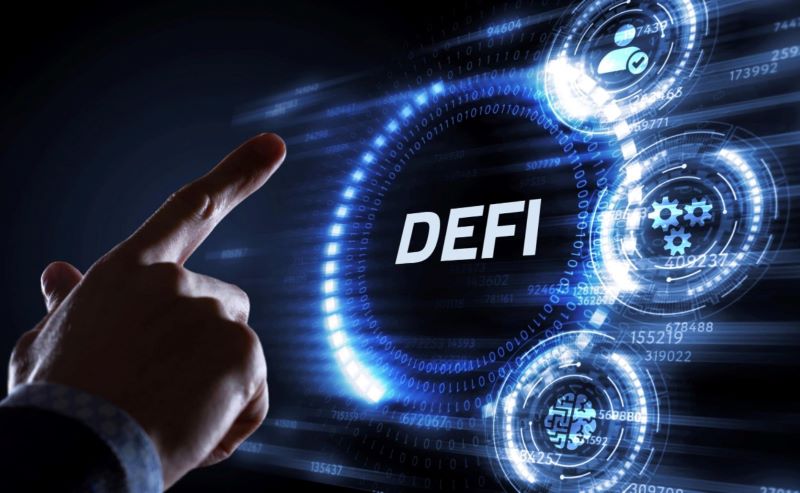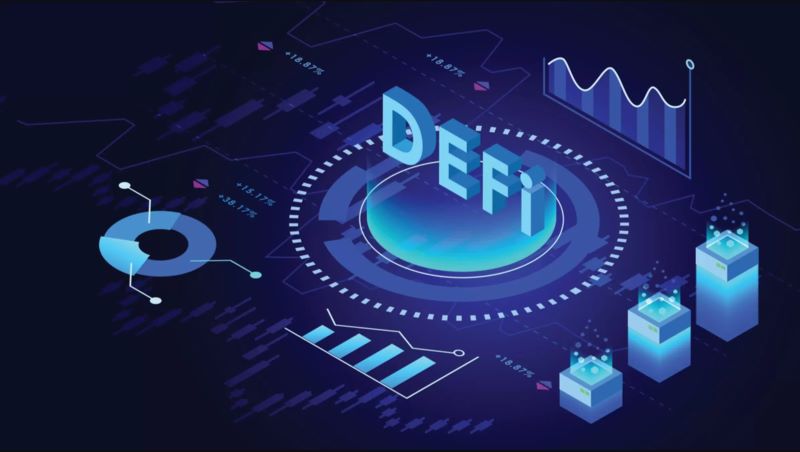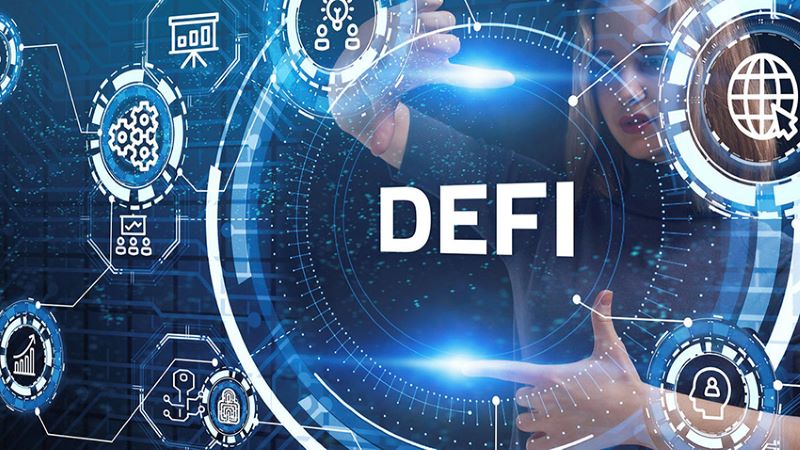This guide offers an in-depth look at how DeFi lending platforms are revolutionizing traditional borrowing and lending by removing intermediaries. Discover how these innovative solutions work, the key platforms involved, and the benefits and risks associated with decentralized lending. Join us to understand how DeFi is reshaping financial transactions and creating new opportunities in the financial landscape.
Introduction to DeFi Lending
Definition
DeFi Lending, or lending in the decentralized finance sector, is a system that allows users to conduct asset borrowing and lending transactions without the need for intermediaries like banks or traditional financial institutions. DeFi Lending operates on a blockchain platform, utilizing smart contracts to automate and secure lending transactions. Users can borrow funds by providing collateral or lend their assets to earn interest, all within a decentralized environment.
Differences Between DeFi and Traditional Lending
No Intermediaries:
- DeFi Lending: Borrowing and lending transactions are conducted directly between borrowers and lenders through smart contracts on the blockchain. This eliminates the need for banks or financial institutions as intermediaries.
- Traditional: Borrowing and lending typically involve banks or financial institutions, where loan terms are determined and managed by these intermediaries.
Transparency and User Control:
- DeFi Lending: All transactions and contracts are publicly recorded on the blockchain, providing transparency and auditability at any time. Users have complete control over their assets and loan terms.
- Traditional: Processes and terms are often not fully transparent, and users have to rely on banks to manage assets and decide on terms.
Accessibility and Flexibility:
- DeFi Lending: Global users can access lending and borrowing services without being restricted by geography or traditional credit requirements. The borrowing and lending process can be done quickly and easily.
- Traditional: Traditional borrowing and lending often require borrowers to have a good credit score and may be limited by local regulations and requirements. Approval and disbursement times can be longer.
DeFi Lending is opening up a new and promising approach to asset borrowing and lending, improving transparency, accessibility, and reducing transaction costs compared to traditional forms of lending.
The Mechanism of DeFi Lending
DeFi Lending, or lending within the decentralized finance system, operates through smart contracts on a blockchain platform. Here are the basic steps and mechanisms of DeFi Lending:
Profile Creation and Asset Provision:
- Borrowers: To borrow funds, users need to provide collateral. This collateral can be various cryptocurrencies such as Ethereum (ETH), Bitcoin (BTC), or other tokens. The collateral is deposited into a smart contract on the DeFi platform.
- Lenders: To lend, users deposit their assets into a smart contract. They can choose the interest rate they want to receive and the loan duration.
Smart Contracts:
- Smart contracts are self-executing code that automatically enforces the terms of the loan agreement without the need for third-party intervention. This contract ensures that transactions are carried out in accordance with the agreed-upon rules and conditions.
Interest Rate and Terms Determination
- Interest Rate: Interest rates on loans are typically determined based on supply and demand within the platform. Smart contracts can automatically adjust interest rates based on market factors.
- Terms: Loan terms, including loan duration, interest rate, and minimum collateral requirements, are all defined within the smart contract.
Transaction Processing:
- When a borrower requests a loan, the smart contract checks if the collateral meets the requirements. If it does, the contract executes the disbursement of the loan amount to the borrower.
- Lenders receive interest from the assets they have deposited into the smart contract.
Payment and Repayment:
- Payment: Borrowers must repay the loan amount along with interest at the agreed-upon time. If they fail to do so, the collateral will be liquidated and distributed to the lenders according to the terms specified in the smart contract.
- Collateral Return: After the borrower completes the payment, the smart contract returns the collateral to the borrower.
Monitoring and Management:
- Security: The DeFi Lending system employs advanced security mechanisms to ensure that assets and transactions are safe.
- Transparency: All transactions and activities are recorded on the blockchain, providing transparency and auditability.
Through these mechanisms, DeFi Lending offers an automated, transparent, and intermediary-free lending solution, allowing users easy access to financial services and the ability to optimize their returns.
How to Participate in DeFi Lending
Participating in DeFi Lending is a relatively simple process, but it requires users to have the necessary knowledge and tools.
Choosing a DeFi Platform:
- Research: Research and choose a DeFi platform that suits your needs. Some popular platforms include Aave, Compound, and MakerDAO. Each platform has its own characteristics and requirements, so choose one that aligns with your investment goals.
- Evaluate: Consider factors such as interest rates, security features, and transaction fees on each platform to make an informed decision.
Creating a Blockchain Wallet:
- Choose a wallet: To interact with DeFi platforms, you need a cryptocurrency wallet that supports the tokens of your chosen DeFi platform. Popular wallets like MetaMask, Trust Wallet, or Coinbase Wallet are good options.
- Set up and secure: Create your wallet, and store your private keys and recovery phrase securely to protect your assets.
Depositing Assets into Your Wallet:
- Buy cryptocurrency: Purchase the cryptocurrencies supported by the DeFi platform (e.g., Ethereum, USDT, or DAI) through a cryptocurrency exchange.
- Transfer funds: Transfer the cryptocurrency from the exchange or another wallet to your DeFi Lending wallet.
Connecting Your Wallet to the DeFi Platform:
- Connect your wallet: Access the chosen DeFi platform and connect your wallet to it using the platform’s wallet connection feature.
Providing Assets and Participating in Lending and Borrowing:
- Provide assets: To lend, you need to deposit your assets into the DeFi platform following its instructions. You can choose the interest rate and other terms if the platform allows.
- Borrow funds: If you want to borrow, you need to provide collateral to the platform. After the collateral is verified, the platform will disburse the loan amount to you.
Tracking and Managing Transactions:
- Monitor: Keep track of your transactions and asset balances in your wallet, as well as loans and interest rates on the DeFi Lending platform.
- Manage: Manage your loans, make repayments, and withdraw collateral when needed.
Security and Evaluation:
- Security: Always maintain the security of your account and wallet information. Avoid sharing your private keys or sensitive information.
- Periodic evaluation: Periodically assess your investment performance and adjust your strategy if necessary.
Participating in DeFi Lending not only helps you access new financial opportunities but also allows you to leverage the benefits of blockchain technology in asset management and investment.
DeFi lending represents a groundbreaking shift in how we approach borrowing and lending within the financial ecosystem. By leveraging decentralized platforms, users gain access to innovative, transparent, and efficient financial solutions that challenge traditional models. As the DeFi landscape continues to evolve, understanding these decentralized lending solutions becomes increasingly crucial for anyone looking to navigate this space effectively. For further insights and updates on this transformative technology, be sure to follow BlockchainBulletinweekly, where we bring you the latest developments and expert analyses.



